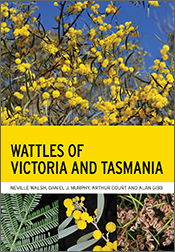Wildlife, Fire and Future Climate

A Forest Ecosystem Analysis
Edited by: Brendan Mackey, David Lindenmayer, Malcolm Gill, Michael McCarthy, Janette LindesayPresents a model landscape-wide case study of refugia and future climate in the tall, wet forests of the Central Highlands of Victoria.
The conservation of Earth's forest ecosystems is one of the great environmental challenges facing humanity in the 21st century. All of Earth's ecosystems now face the spectre of the accelerated greenhouse effect and rates of change in climatic regimes that have hitherto been unknown. In addition, multiple use forestry – where forests are managed to provide for both a supply of wood and the conservation of biodiversity – can change the floristic composition and vegetation structure of forests with significant implications for wildlife habitat. + Full description
Wildlife, fire and future climate: a forest ecosystem analysis explores these themes through a landscape-wide study of refugia and future climate in the tall, wet forests of the Central Highlands of Victoria. It represents a model case study for the kind of integrated investigation needed throughout the world in order to deal with the potential response of terrestrial ecological systems to global change. The analyses presented in this book represent one of the few ecosystem studies ever undertaken that has attempted such a complex synthesis of fire, wildlife, vegetation, and climate.
Wildlife, fire and future climate: a forest ecosystem analysis is written by an experienced team of leading world experts in fire ecology, modelling, terrain and climate analysis, vegetation and wildlife habitat. Their collaboration on this book represents a unique and exemplary, multi-disciplinary venture.
- Short descriptionNews
No longer available in a print edition.
Reviews
“The editors of the book come with impeccable credentials and share an unparalleled combination of skill. …there is no comparable publication that I am aware of in Australia that pulls together all of these different elements. I have no doubt therefore the this publication will make a significant contribution to the field.”
Dr Jann Williams, President, Ecology Society of Australia
"Overall, the book is clearly written, and will be a valuable addition to the library of anyone interested in forest ecology or landscape-scale disturbance dynamics, as it presents a thoughtful approach to a complex problem, and successfully deals with the problems of substantial inadequacies in data."
Elisabeth M Tasker, NSW National Parks & Wildlife Service, Australia
(Austral Ecology vol. 29, 2004)
Contents
Preface and Acknowledgments
Chapter 1: Forest Refugia
Introduction
Forest Conservation: A Burning Question
Chapter Outline and Overview of Methods
Chapter 2: Defining Forest Refugia for Arboreal Marspials
Introduction
Origin of the Term ‘Refugia’
Threatening Processes
Habitat Requirements of Arboreal Marsupials
Importance of Forest Structure to Habitat
Some Working Hypotheses
Conclusions
Chapter 3: Local Extinction or Persistence of Mountain Ash due to Fire Regimes
Introduction
Mortality of Trees
Estimating Mean Fire Interval: Methods
Persistence of Mountain Ash
Estimating Mean Fire Interval: Results
Discussion
Conclusions
Chapter 4: Environmental Controls on Vegetation Structure and Fire Regimes
Introduction
Overview of Methods
Site-based Plot Analyses
Mapped Vegetation Analysis
Spatial Models of Potential Refugia
Discussion and Conclusions
Chapter 5: Climate and Fire in the Central Highlands of Victoria
Introduction
Overview of Dominant Climatic Processes
Climate Record
Linking Weather and Fire
Future Climate Scenarios
Discussion and Conclusions
Chapter 6: Future of Refugia in Mountain Ash Forests of the Central Highlands of Victoria
Introduction
Do Refugia Exist?
Implications for Forest Management
New Silvicultural Practices in Mountain Ash Forests
Policy Implications
Implications for Modelling and Data Shortages
Conclusions
Appendix 1: Spatial Database Development
Introduction
Digital Elevation Model (DEM)
Terrain and Hydrological Attributes (TAPES_G)
Compound Terrain Indices (TWI)
Solar Radiation Attributes (SRAD)
Meso-scaled Climatic Data
Site-based Field Data
Appendix 2: Spatial Climate Models
Fitting Climate Surfaces
Data Quality Considerations
Using the Climate Surfaces
References
Index






